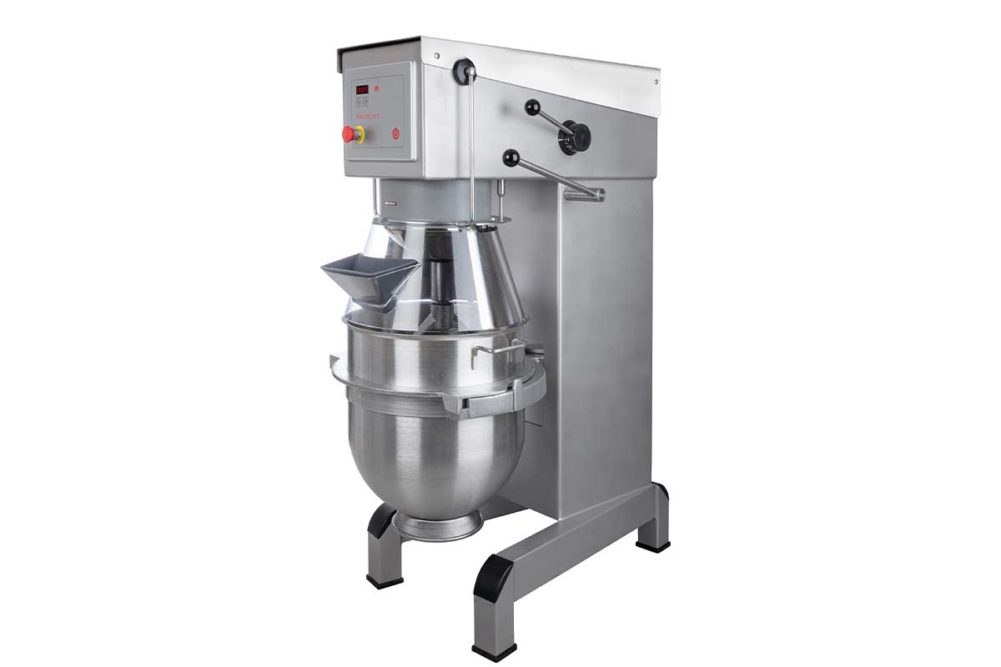When purchasing a new mixer, bakers should fit it to their current product lineup’s needs, but they shouldn’t ignore future products. That way the mixer can grow with the company.
“For example, if the products you are now producing are requiring soaked grain you may need a way to load those grains into the mixer, an ingredient door in the canopy and a trough hoist,” said Andrew McGhie, director of sales, Shaffer, a Bundy Baking solution. “Some of those can be retrofitted, but some are better included in the original mixer design.”
Motor size is another feature on the mixer that bakers need to keep an eye on for the future. If bakers expect to branch into doughs that are stiffer such as healthier cookie or bar doughs, they may want to consider increasing the size of the mixer motor to provide some flexibility for that product extension.
Making space for future products, however, requires mixers that can adjust quickly. This often relies on speed, time and temperature.
“The operator is limited to changes in mix times at low and high speeds and temperature,” said Kevin Knott, technical sales manager, Bühler Inc. “If unusual product mix situations arise, then a reduction in mix capacity or even line capacity may be required.”
While mixers with only three fixed speeds may have difficulty adapting to changes in products, variable-speed ones can provide more flexibility.
“Some models have a variable-speed system where you can adjust to the rotation speed that you need, depending on the ingredients in the bowl,” said Peter Frederiksen, sales director, Varimixer. “This enables you to be creative and get the exact mixing result that you desire.”
For continuous mixers, Matt Risser, Exact Mixing product line manager, Reading Bakery Systems (RBS) explained that the most common adjustments when jumping between products is the shaft speed and the rate of dough production.
“This would be similar to adjusting the mix time in a batch process,” he said. “In the Exact Continuous Mixers, the mixing shaft configuration can be changed to account for changes in the product mix. This is usually only done in extreme cases, but it does give the mixing system possible applications beyond their first intended use.”
Automated systems like recipe programming are removing the reliance on operator knowledge and expertise.
“Operators can adjust pre-set tool rotation speeds, but more and more the equipment is enabled to set the right speed for the right recipe,” said Claire Auffrédou, marketing and digital development, VMI. “Motors fitted with a drive thus allow this accurate adjustment from the HMI, but it requires a good knowledge of the process. Another way to guarantee an optimal setting of the machine when changing applications is to use the recipe programming mode.”
With a touch control panel, VMI mixers have intuitive recipe programming with pre-set mixing parameters that result in consistent dough and energy consumption.
And for vertical mixers, there is always the option to change mixing tools to suit different products, as Mr. Wilkinson pointed out.
This article is an excerpt from the October 2021 issue of Baking & Snack. To read the entire feature on Mixers, click here.





